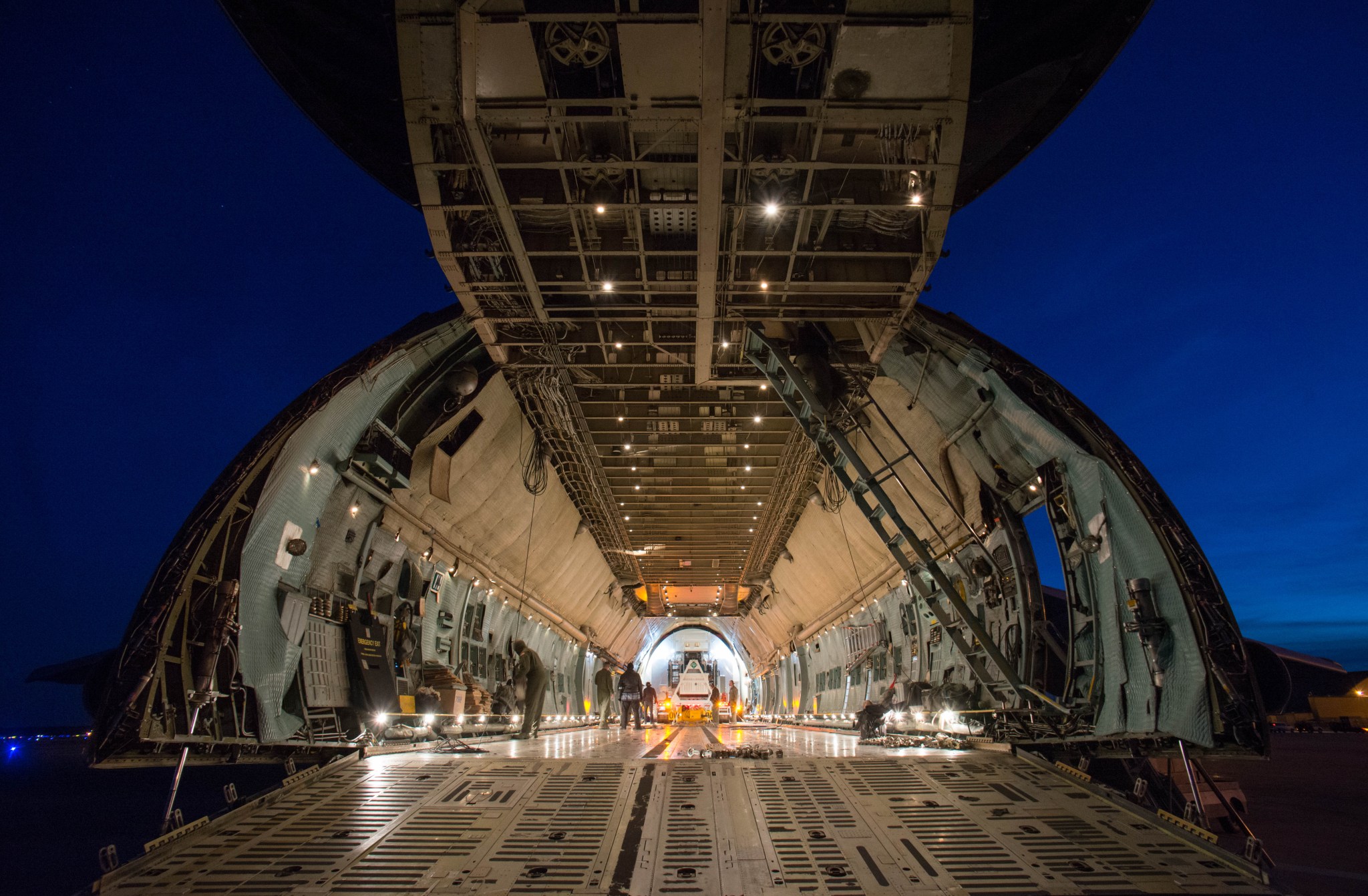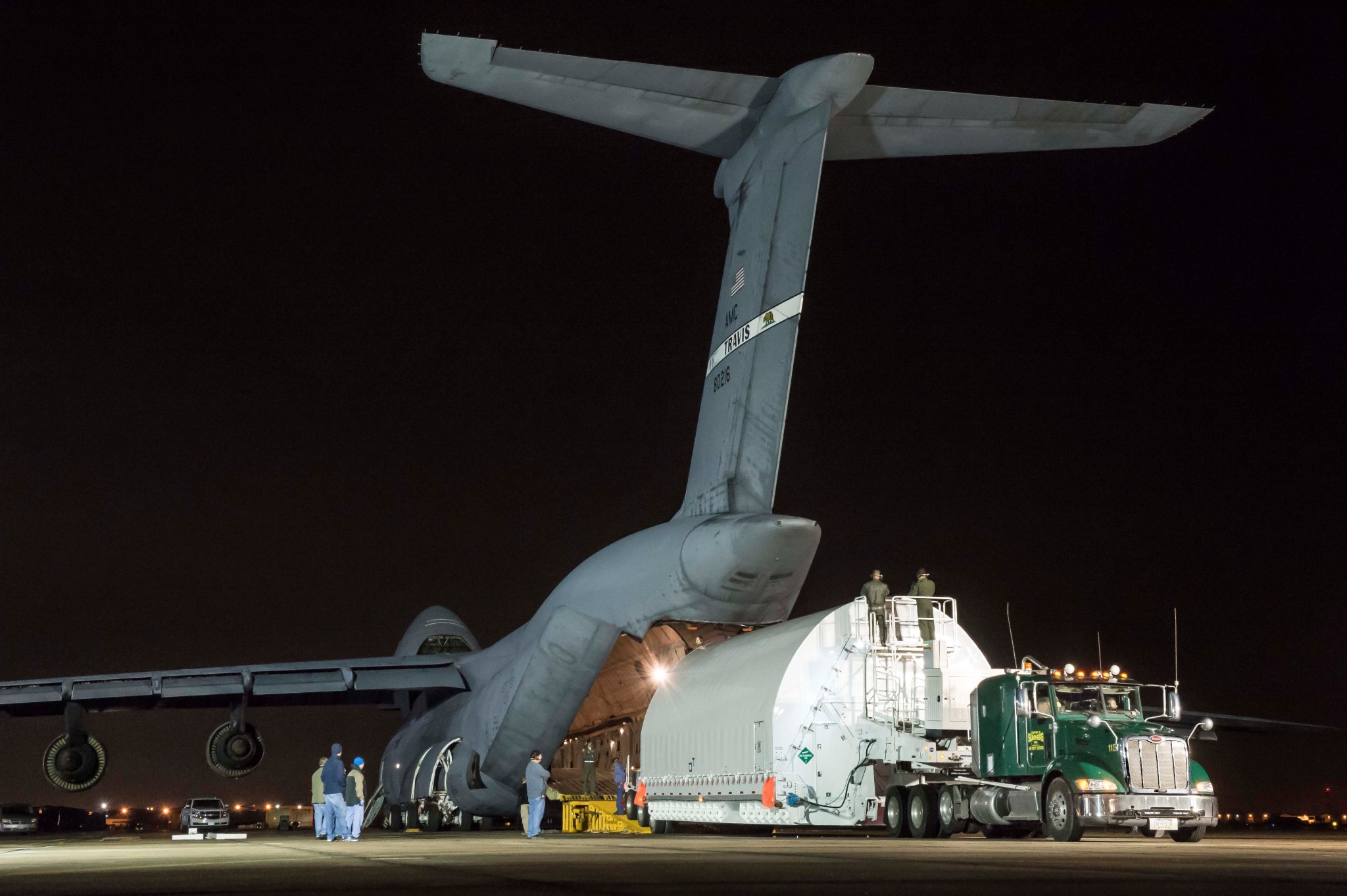A big, bright James Webb Space Telescope “STTARS” is now deep in the heart of Texas. The Space Telescope Transporter for Air Road and Sea (STTARS) is a giant white shipping container with a very important cargo: a test model of part of the Webb telescope, called the “Pathfinder Backplane.” This new NASA video shows its arrival at NASA’s Johnson Space Center in Houston on Feb. 5, 2015.
The Pathfinder Backplane is a practice section of the James Webb Space Telescope. To ensure the telescope will operate at its frigid destination 1 million miles out in space, it must complete cryogenic tests. The biggest cryogenic test occurs at Chamber A at Johnson, the same vacuum chamber where Apollo spacecraft were tested.
Credits: NASA’s Goddard Space Flight Center
Download this video in HD formats from NASA Goddard’s Scientific Visualization Studio
“The James Webb Space Telescope is the biggest telescope for space that’s ever been built,” said Andrew Booth, pathfinder lead optical engineer at NASA’s Goddard Space Flight Center in Greenbelt, Maryland.
But its enormous size means special accommodations to move it halfway across the country. Enter STTARS.
“The major challenge in this transport is the size,” said Adam Carpenter, one of the mechanical integration engineers on the STTARS team. “The container weighs 165,000 pounds. There is a tremendous amount of planning going through this move.”
The journey began in a clean room at Goddard. The massive shipping container entered the clean room floating on air pads, like a puck on an air hockey table. Then engineers lifted and lowered the 3,000-pound honeycombed Pathfinder Backplane by crane into the container.
Once the container exited the clean room, hydraulic adjustable wheels were attached, and the whole thing was hooked up to a semitruck engine. By midnight, the STTARS was on its way to Joint Base Andrews in Maryland – very, very slowly. Traveling at 5 mph, the STTARS team walked alongside the container making adjustments along its seven hour-long journey.
Once the massive container reached Andrews, it was loaded up into a C-5 Charlie military transport plane, the largest cargo plane in the U.S. fleet, which was designed to carry tanks. The container slid inside with very little clearance on all sides.

“What’s so significant about this move is that this is the first payload for Webb leaving Goddard,” said Carpenter, who flew with the Pathfinder Backplane to Houston. “When the flight unit leaves Goddard, we’ll be doing this move with the Integrated Science Instrument Module (ISIM) and all four instruments and all 18 primary mirror segments, based off what we learned here. With this project, everything is so big and we are doing so many firsts. During this process we are all working long hours to be sure everything is done right.”
When the C-5 landed at Ellington airport in Houston, the Pathfinder Backplane was carefully unloaded and trucked to Johnson. In the coming weeks it will be prepared for a key cryogenic test that will help the team check out testing methods for the Webb telescope.

“We’ve got to test the test,” Booth said. “That’s why this pathfinder is so valuable because it will ensure the testing on the actual telescope is accurate.”
“The Pathfinder Backplane is a key step to the next phase of Webb testing,” said Bethany Selna, Optical Telescope Element and the Integrated Science Instrument Module (OTIS) mechanical integration and test lead. ”The Pathfinder demonstrates the ability to test the full-scale structure with optics at cryogenic temperatures. We will then repeat the tests with the flight hardware.”
The James Webb Space Telescope is the scientific successor to NASA’s Hubble Space Telescope. It will be the most powerful space telescope ever built. Webb is an international project led by NASA with its partners, ESA (the European Space Agency) and the Canadian Space Agency.
Related Links
Laura Betz
NASA’s Goddard Space Flight Center, Greenbelt, Maryland


























